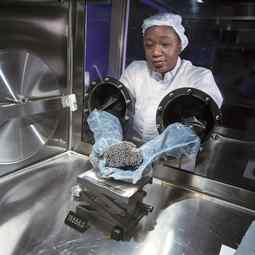
From The Independent:
Why are we asking this now?
The American space agency Nasa announced yesterday that three separate missions examining the Moon have found clear evidence of water there. The discovery has huge implications not only for science, but geopolitics as well.
Water, as on Earth? Water you could float a boat in?
No. We are not talking oceans here, or rivers, or lakes or even puddles. What researchers claim to have found are molecules of water and hydroxyl (hydrogen and oxygen) that interact with molecules of rock and dust in the top millimetres of the Moon's surface – in essence, water-bearing minerals, rather than water that is in any way free flowing. But water is water. And water is the essential element for life on earth.
Read more ....


















